Makindo Medical Notes"One small step for man, one large step for Makindo" |
|
|---|---|
| Download all this content in the Apps now Android App and Apple iPhone/Pad App | |
| MEDICAL DISCLAIMER: The contents are under continuing development and improvements and despite all efforts may contain errors of omission or fact. This is not to be used for the assessment, diagnosis, or management of patients. It should not be regarded as medical advice by healthcare workers or laypeople. It is for educational purposes only. Please adhere to your local protocols. Use the BNF for drug information. If you are unwell please seek urgent healthcare advice. If you do not accept this then please do not use the website. Makindo Ltd. |
Spinal Cord Anatomy
-
| About | Anaesthetics and Critical Care | Anatomy | Biochemistry | Cardiology | Clinical Cases | CompSci | Crib | Dermatology | Differentials | Drugs | ENT | Electrocardiogram | Embryology | Emergency Medicine | Endocrinology | Ethics | Foundation Doctors | Gastroenterology | General Information | General Practice | Genetics | Geriatric Medicine | Guidelines | Haematology | Hepatology | Immunology | Infectious Diseases | Infographic | Investigations | Lists | Microbiology | Miscellaneous | Nephrology | Neuroanatomy | Neurology | Nutrition | OSCE | Obstetrics Gynaecology | Oncology | Ophthalmology | Oral Medicine and Dentistry | Paediatrics | Palliative | Pathology | Pharmacology | Physiology | Procedures | Psychiatry | Radiology | Respiratory | Resuscitation | Rheumatology | Statistics and Research | Stroke | Surgery | Toxicology | Trauma and Orthopaedics | Twitter | Urology
Related Subjects: |Transverse myelitis |Acute Disseminated Encephalomyelitis |Cervical spondylosis |Spinal Cord Anatomy |Acute Disc Prolapse |Spinal Cord Compression |Spinal Cord Haematoma |Foix-Alajouanine syndrome |Cauda Equina |Conus Medullaris syndrome |Anterior Spinal Cord syndrome |Central Spinal Cord syndrome |Brown-Sequard Spinal Cord syndrome
Difficult cases include head injury and coma with a coexisting neck injury. In any doubt, apply a hard collar to stabilize the neck. If the head is scanned in such cases, obtain cervical spine films up to the C7/T1 level to ensure no spinal injury is missed.
About
- Early management of spinal injuries is crucial as delays can lead to long-term neurological consequences.
- The spinal cord extends from the foramen magnum (base of the skull) to the L1 vertebra, controlling motor and sensory functions throughout the body.
- Segments C3-5 supply the diaphragm, essential for breathing.
- Segments C5-T1 supply motor and sensory functions to the arms and hands.
Anatomy
- The human spine consists of 31 pairs of spinal nerves, categorized as follows:
- Cervical: 8 pairs (C1 through C8)
- Thoracic: 12 pairs (T1 through T12)
- Lumbar: 5 pairs (L1 through L5)
- Sacral: 5 pairs (S1 through S5)
- Coccygeal: 1 pair (Co1)
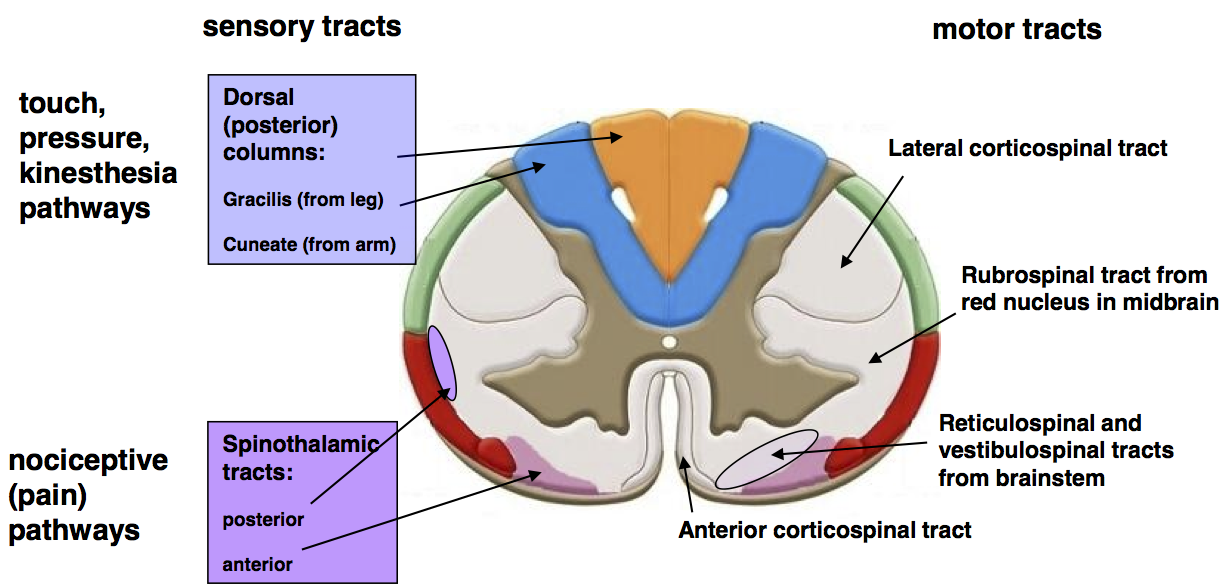 Figure 1:Illustration of spinal anatomy showing different spinal nerve regions.
Figure 1:Illustration of spinal anatomy showing different spinal nerve regions.
Aetiology
- The spinal cord is contained within the spinal canal, surrounded by vertebral bodies.
- Vertebral Column Structure: 30 vertebral bodies:
- Cervical (7)
- Thoracic (12)
- Lumbar (5)
- Sacral (5, fused)
- Coccygeal (1, fused)
- Spinal Nerves: 31 pairs of spinal nerves:
- Cervical: 8
- Thoracic: 12
- Lumbar: 5
- Sacral: 5
- Coccygeal: 1
- The first spinal nerve (C1) exits above its corresponding vertebra, while the remaining nerves exit below.
- Ventral and dorsal nerve roots emerge laterally and join to form a single nerve, exiting through the intervertebral foramina.
- The spinal cord ends at L1/L2, below which lies the cauda equina, containing efferent motor and afferent sensory roots.
- Thicker Regions: The cervical and lumbar regions are thicker due to the fibers connecting to the arms and legs, making them more susceptible to compression injuries.
- The spinal cord is encased in three meningeal layers: pia mater, arachnoid mater, and dura mater.
- Outside the dura mater lies a space containing blood vessels, some fat, and the vertebral canal walls.
- Anteriorly, the spinal cord is bordered by the vertebral bodies and intervertebral discs.
Spinal Cord Anatomy
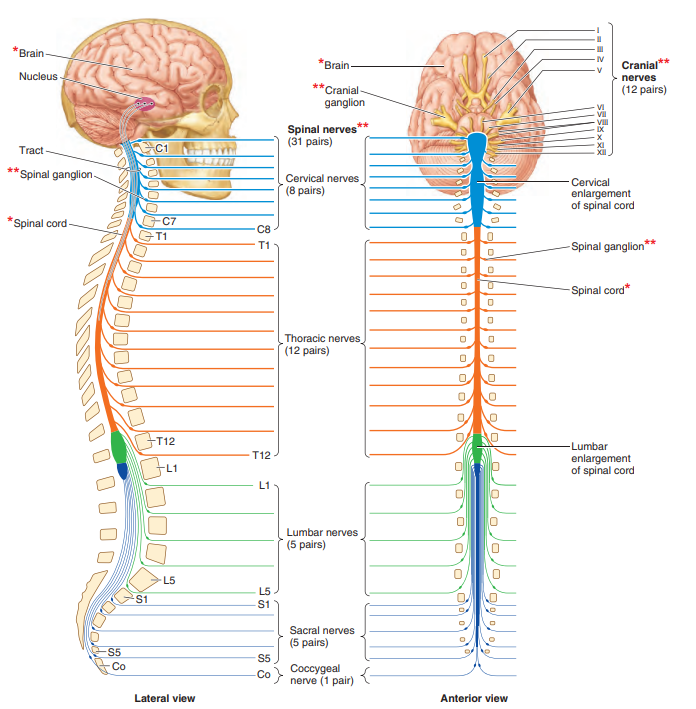 Figure 2:Detailed view of spinal cord anatomy, including tracts and neural pathways.
Figure 2:Detailed view of spinal cord anatomy, including tracts and neural pathways.
Vascular Supply
- Single Anterior Spinal Artery: Supplies the anterior two-thirds of the spinal cord.
- Paired Posterior Spinal Arteries: Supply the posterior one-third, including the dorsal columns.
- Segmental Arteries: Branches from the aorta, including the Artery of Adamkiewicz, which supplies the lower spinal cord between T6 and L4.
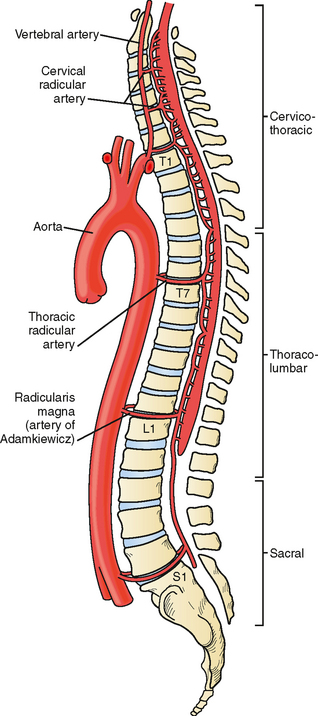 Figure 3:Diagram illustrating the vascular supply of the spinal cord.
Figure 3:Diagram illustrating the vascular supply of the spinal cord.
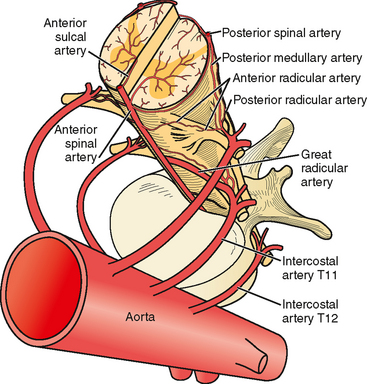 Figure 4:Spinal cord cross-section highlighting vascularization and neural tracts.
Figure 4:Spinal cord cross-section highlighting vascularization and neural tracts.
Contents of the Spinal Cord
- Descending Tracts: Responsible for motor functions.
- Corticospinal Tract: Originates from the primary motor cortex and travels through the corona radiata, internal capsule, pons, and medulla. Divides into:
- Lateral corticospinal tract (90% of fibers) in the lateral funiculus, decussating in the medulla.
- Anterior corticospinal tract, descends in the anterior funiculus with some uncrossed fibers.
- Tectospinal Tract: Originates in the superior colliculus, controls head and neck movements.
- Rubrospinal Tract: Arises from the red nucleus, regulates muscle tone and motor control.
- Vestibulospinal Tract: Originates in the lateral vestibular nucleus, modulates posture and balance.
- Corticospinal Tract: Originates from the primary motor cortex and travels through the corona radiata, internal capsule, pons, and medulla. Divides into:
- Ascending Tracts: Responsible for sensory transmission.
- Lateral Spinothalamic Tract: Carries pain and temperature sensations, crossing in the anterior commissure, reaching the thalamus.
- Anterior Spinothalamic Tract: Conveys light touch and pressure, crossing in the anterior commissure, then to the thalamus.
- Dorsal Columns (Fasciculus Gracilis and Cuneatus): Transmits fine touch, pressure, vibration, and proprioception; decussates in the medulla before reaching the thalamus.
- Dorsal Spinocerebellar Tract: Uncrossed pathway to the cerebellar vermis, providing detailed limb and posture information.
- Ventral Spinocerebellar Tract: Crossed pathway, providing lower limb movement and posture data to the cerebellum.
- Cuneocerebellar Tract: Crosses and relays upper limb coordination data to the cerebellum.
 Figure 5:Cross-section of the spinal cord showing descending and ascending tracts.
Figure 5:Cross-section of the spinal cord showing descending and ascending tracts.
Risk Factors
- Ankylosing Spondylitis: Chronic inflammatory disease causing spinal fusion and increasing injury risk.
- Cervical Spondylosis: Degenerative changes in the cervical spine leading to spinal canal narrowing.
- Narrow Spinal Canal: Congenital or acquired conditions that reduce the space available for the spinal cord.
Dangerous Mechanisms
- Falls from elevation of three feet or more (e.g., five steps).
- Axial load to the head, such as diving into shallow water.
- High-speed motor vehicle collisions, especially rollover accidents or ejection from the vehicle.
- Accidents involving motorized recreational vehicles like ATVs or motorcycles.
- Bicycle collisions with vehicles.
- Rear-end collisions resulting in being pushed into traffic or hit by larger vehicles like buses or trucks.
Clinical Features
- Spinal Shock: Acute phase characterized by loss of reflexes below the lesion, flaccid limbs, atonic bladder, and loss of vasomotor control. This phase can last up to two weeks.
- Heightened Neuroreflexes: Occur after spinal shock resolves, leading to spasticity of limbs, increased reflexes, upgoing plantar responses (Babinski sign), spastic bladder, and heightened autonomic functions like sweating.
- Midline Pain: Pain along the spine, especially with movement, accompanied by local tenderness and a sensory level below which sensation is lost.
- Diaphragmatic Breathing: Observed when intercostal muscles are damaged but C3-5 spinal segments remain intact, allowing diaphragmatic control.
- Acute Paraplegia and Quadriplegia: Result from spinal cord damage above T1, affecting motor and sensory functions in the limbs.
- Priapism: Persistent, often painful erection due to loss of sympathetic tone, along with hypotension and bradycardia.
- Upper Motor Neuron Signs: Hyperreflexia, spasticity, and Babinski sign may be present in myelopathy.
Transection May Be Incomplete
- Hemisection of the Cord (Brown-Séquard Syndrome):
- Loss of ipsilateral motor function (corticospinal tract) and proprioception/vibration sense (posterior columns).
- Contralateral loss of pain and temperature sensation (spinothalamic tract).
- Anterior Cord Syndrome:
- Bilateral weakness and loss of pain and temperature sensation due to damage to the corticospinal and spinothalamic tracts.
- Preservation of posterior column functions like proprioception and vibration sense.
- Central Cord Syndrome:
- More pronounced weakness and sensory loss in the upper limbs compared to the lower limbs.
- Often results from hyperextension injuries in individuals with pre-existing cervical spondylosis.
| Neurological level | Motor | Sensation | Reflexes |
|---|---|---|---|
| C5 | Deltoid | Lateral arm | Biceps (C5–C6) |
| C6 | Wrist extensors | Lateral forearm | Brachioradialis (C5–C6) |
| C7 | Triceps | Middle finger | Triceps (C7–C8) |
| C8 | Long finger flexors | Medial forearm | No reflex |
| T1 | Interosseus muscles | Medial arm | No reflex |
| Neurological level | Motor | Sensation | Reflex |
|---|---|---|---|
| L2 | Hip flexion | Anterior thigh, groin | No reflex |
| L3 | Knee extension | Anterior and lateral thigh | Patellar (L3–L4) |
| L4 | Ankle dorsiflexion | Medial leg and foot | Patellar (L3–L4) |
| L5 | Extensor hallucis longus | Lateral leg and foot | No reflex |
| S1 | Ankle plantarflexion | Lateral foot and little toe | Achilles (S1–S2) |
Investigations
- Radiological Imaging:
- Plain Radiographs (X-Rays): Lateral, anteroposterior, and odontoid peg views of the spine. The lateral view should extend to the C7/T1 junction to assess the entire cervical spine.
- Computed Tomography (CT) Scan: Preferred for evaluating bony injuries, fractures, and dislocations. Particularly useful for assessing C1/C2 injuries.
- Magnetic Resonance Imaging (MRI): Superior for visualizing soft tissue injuries, including ligaments, intervertebral discs, and the spinal cord. Detects bone marrow edema, ligamentous tears, and spinal cord compression.
- Neurological Assessment:
- Comprehensive motor and sensory evaluation to determine the extent of spinal cord involvement.
- Assessment of reflexes, muscle tone, and presence of pathological reflexes like the Babinski sign.
- Other Diagnostic Tests:
- Nerve Conduction Studies (NCS) and Electromyography (EMG): Evaluate the function of peripheral nerves and muscles, helping differentiate between spinal and peripheral causes of neurological deficits.
- Blood Tests: Assess for any underlying conditions that may exacerbate spinal injuries, such as coagulopathies.
Management
The management approach depends on the severity of symptoms and degree of spinal involvement. Prompt and appropriate treatment is essential to prevent permanent neurological damage.
- Initial Stabilization (ABCs):
- A (Airway): Ensure airway patency, especially in patients with potential head injuries or reduced consciousness.
- B (Breathing): Provide supplemental oxygen and support ventilation if necessary.
- C (Circulation): Manage blood pressure, control bleeding, and maintain adequate perfusion.
- D (Disability): Assess neurological status using the Glasgow Coma Scale and perform a rapid neurological exam.
- E (Exposure and Environment): Expose the patient as necessary to identify all injuries while preventing hypothermia.
- Spinal Immobilization:
- Apply a hard cervical collar to stabilize the neck in cases of suspected spinal injury.
- Use additional immobilization devices like sandbags or vacuum mattresses to prevent further movement during transport.
- Respiratory Support:
- High cervical lesions (above C5) may impair diaphragmatic breathing, necessitating mechanical ventilation.
- Pharmacological Interventions:
- Steroids: Administration of high-dose IV methylprednisolone is controversial and should follow local protocols. Some studies suggest limited neurological benefit.
- Surgical Interventions:
- Decompression: Urgent neurosurgical assessment for decompression if there is evidence of spinal cord compression.
- Stabilization: Surgical fixation to stabilize the spine in cases of unstable injuries.
- Clot Evacuation: May be necessary if there is a significant haematoma causing cord compression.
- Supportive Care:
- Skincare: Perform regular turning every two hours to prevent pressure ulcers.
- Bladder Management: Use intermittent catheterization to prevent overdistension and reduce infection risk.
- Infection Prevention: Maintain aseptic techniques during catheterization and wound care.
- Nutrition: Ensure adequate nutritional support to aid in recovery.
- Rehabilitation:
- Early mobilization and physical therapy to restore function and prevent complications like deep vein thrombosis.
- Occupational therapy to assist with activities of daily living.
- Psychological support to address emotional and cognitive challenges.
- Genetic Counseling:
- For hereditary conditions contributing to spinal instability or degeneration.
Prognosis
Spinal injuries are often life-altering with the potential for permanent neurological deficits. The prognosis depends on the severity and location of the injury, promptness of treatment, and the extent of spinal cord involvement.
- Functional Recovery: Many patients experience some degree of neurological improvement with timely and appropriate management, especially if the spinal cord is not completely transected.
- Persistent Deficits: May include chronic pain, motor weakness, sensory loss, and autonomic dysfunction.
- Complications: Include respiratory issues, pressure ulcers, deep vein thrombosis, urinary tract infections, and psychological challenges like depression.
- Mortality: Higher in cases with high cervical or complete spinal cord injuries.
- Quality of Life: Enhanced with comprehensive rehabilitation, assistive devices, and support systems.
Prevention
- Safety Measures: Use seat belts and headrests in vehicles, wear appropriate protective gear during sports, and implement fall prevention strategies in the elderly.
- Ergonomic Practices: Maintain proper posture, especially during prolonged activities like computer work, to reduce neck and spinal strain.
- Strength Training: Strengthen neck and back muscles to provide better support for the spine.
- Health Management: Address and manage pre-existing spinal conditions like cervical spondylosis and ankylosing spondylitis to minimize injury risks.
Collection of Algorithms
-
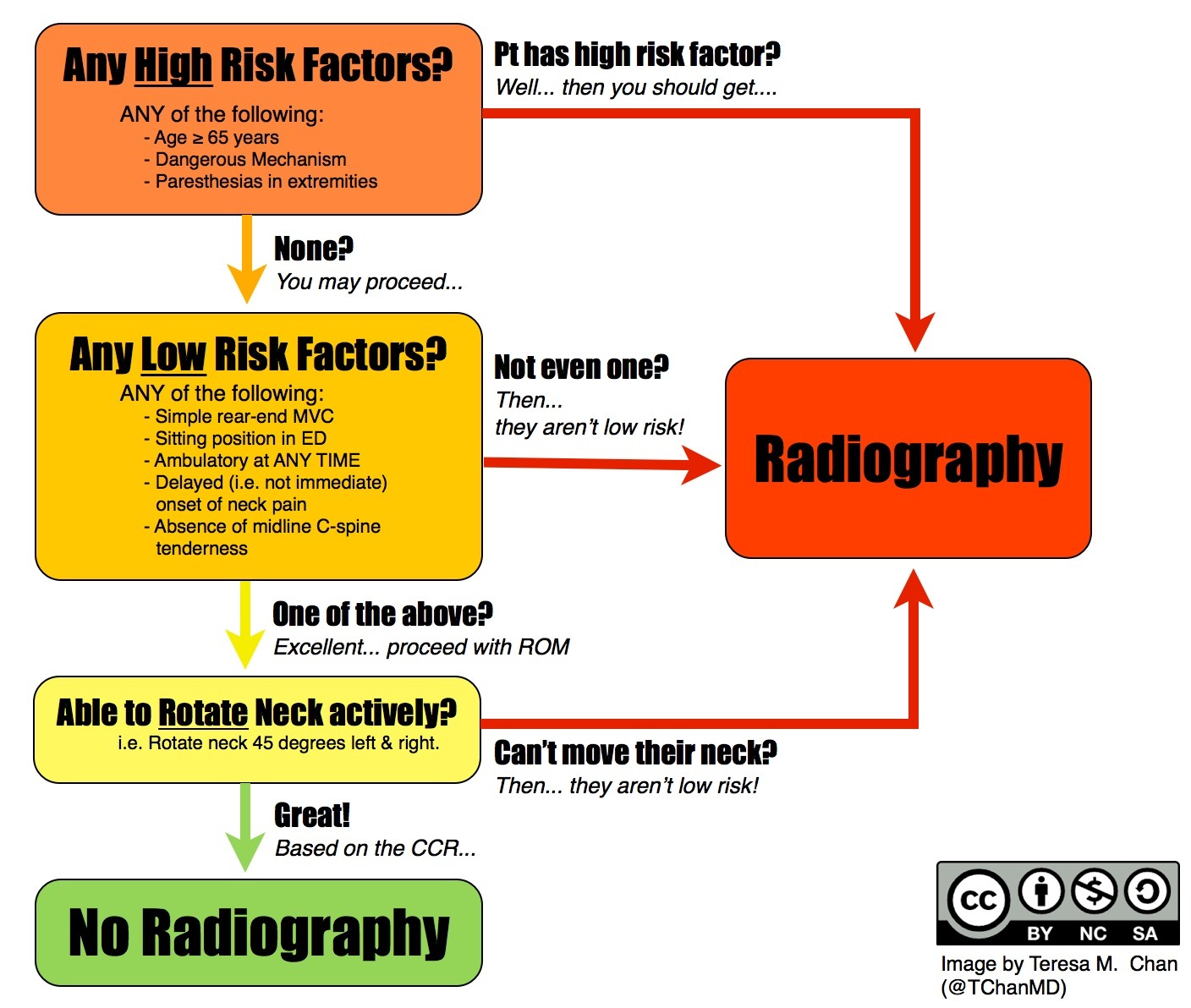 Figure 6:Canadian C-Spine Rule Algorithm for assessing cervical spine injury risk.
Figure 6:Canadian C-Spine Rule Algorithm for assessing cervical spine injury risk.
-
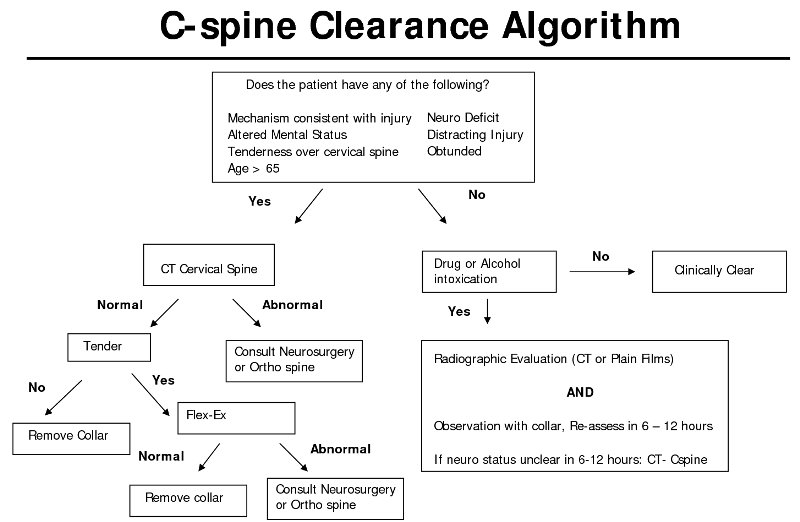 Figure 7:Cervical Spine Clearance Protocol.
Figure 7:Cervical Spine Clearance Protocol.
-
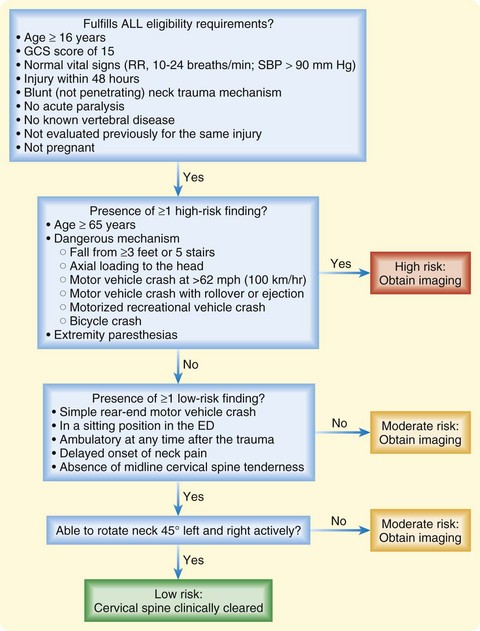 Figure 8:C-Spine Trauma Assessment Flowchart.
Figure 8:C-Spine Trauma Assessment Flowchart.
Additional Protocols
- ABCDE Assessment: A systematic approach to trauma patient evaluation.
- A (Airway): Ensure airway patency, especially in cases with potential cervical spine injury.
- B (Breathing): Assess and support breathing as needed.
- C (Circulation): Evaluate and manage circulation, controlling any haemorrhage.
- D (Disability): Conduct a neurological assessment, including the Glasgow Coma Scale.
- E (Exposure and Environment): Fully expose the patient to identify all injuries while preventing hypothermia.
- Throughout all stages of assessment, protect the person's cervical spine using manual in-line stabilization, especially during airway management, and avoid unnecessary movement of the spine.
- Assess for spinal injury by evaluating factors such as:
- Presence of distracting injuries.
- Influence of drugs or alcohol affecting cooperation.
- Confusion or reduced consciousness levels.
- Neck pain or tenderness.
- Weakness or altered sensation in the extremities.
- Priapism in unconscious or exposed males.
- History of previous spinal issues or surgeries.
Assessment for Cervical Spine Injury
- Determine the risk category using the Canadian C-Spine Rule:
- High Risk: Presence of any high-risk factors, such as age 65 or older, dangerous mechanisms of injury, or paraesthesia in the limbs.
- Low Risk: Presence of low-risk factors like minor rear-end motor vehicle collisions, being ambulatory, and absence of midline cervical spine tenderness.
- No Risk: If the patient has low-risk factors and can actively rotate their neck 45 degrees left and right.
Assessment for Thoracic or Lumbosacral Spine Injury
- Evaluate based on factors such as:
- Age 65 or older with thoracic or lumbosacral spine pain.
- Dangerous mechanisms like falls from heights or axial loads to the spine.
- Pre-existing spinal pathology or osteoporosis.
- Suspected spinal fractures in other regions.
- Neurological symptoms like paraesthesia, weakness, or numbness.
- Physical examination findings like abnormal neurological signs, spinal deformities, or midline tenderness.
- Pain or abnormal neurological symptoms upon mobilization (e.g., sitting, standing, walking).
- Special consideration for children: Assess according to developmental stage and ability to communicate symptoms effectively.
When to Carry Out or Maintain Full In-Line Spinal Immobilisation
- Carry out or maintain full in-line spinal immobilisation if:
- A high-risk factor for cervical spine injury is identified as per the Canadian C-Spine Rule.
- A low-risk factor is present but the patient is unable to actively rotate their neck 45 degrees.
- There is uncertainty regarding spinal injury and the potential for movement may exacerbate the condition.
- Do not carry out or maintain full in-line spinal immobilisation if:
- The patient has low-risk factors, is pain-free, and can actively rotate their neck 45 degrees left and right.
- There are no indications or factors suggesting a spinal injury based on the assessment criteria.
How to Carry Out Full In-Line Spinal Immobilisation
- Customize the immobilization approach based on the patient's specific circumstances, considering factors like neck size, existing deformities, and overall condition.
- In uncooperative or distressed individuals, including children, allow them to find a comfortable position while maintaining manual in-line spinal immobilization.
- For adults:
- Fit an appropriately sized semi-rigid collar unless contraindicated (e.g., compromised airway, known spinal deformities like ankylosing spondylitis).
- Reassess the airway after applying the collar to ensure patency.
- Place and secure the patient on a scoop stretcher to minimize spinal movement.
- Use head blocks and tape, preferably in a vacuum mattress, to maintain spinal alignment.
- For children:
- Follow the same stepwise approach as for adults, ensuring comfort while maintaining spinal immobilization.
Anatomy of the Spinal Cord
The spinal cord is a long, cylindrical structure extending continuous with the brainstem (foramen magnum) to L1/L2 lumbar region of the vertebral column. It is part of the central nervous system (CNS) and acts as a conduit for signals between the brain and the rest of the body. The spinal cord is protected by the vertebrae, meninges, and cerebrospinal fluid (CSF).
Regions of the Spinal Cord
- Cervical Region: The uppermost part of the spinal cord, extending from the foramen magnum to the first thoracic vertebra (C1 to C7). It controls motor and sensory signals to the neck, arms, hands, and diaphragm.
- Thoracic Region: The mid-portion of the spinal cord (T1 to T12), associated with the chest, upper abdominal muscles, and parts of the upper back.
- Lumbar Region: The lower portion of the spinal cord (L1 to L5), which controls movements of the lower back, hips, and legs.
- Sacral Region: The lowest region of the spinal cord (S1 to S5), which controls pelvic organs, the bladder, and lower limbs.
Structure of the Spinal Cord
- Gray Matter: Located centrally, the gray matter forms an "H" or butterfly shape, containing neuron cell bodies, dendrites, and synapses. It is divided into:
- Ventral Horn: Contains motor neurons responsible for voluntary movement.
- Dorsal Horn: Contains sensory neurons that process input from peripheral sensory receptors.
- Lateral Horn: Present in the thoracic and upper lumbar regions, housing autonomic neurons (primarily sympathetic).
- White Matter: Surrounds the gray matter and contains myelinated axons that transmit signals. White matter is divided into:
- Ascending Tracts: Carry sensory information (e.g., pain, touch, proprioception) from the body to the brain.
- Descending Tracts: Transmit motor commands from the brain to the body.
- Meninges: Three protective layers that surround the spinal cord:
- Dura Mater: The tough, outer layer.
- Arachnoid Mater: The middle layer, which contains cerebrospinal fluid (CSF).
- Pia Mater: The delicate inner layer closely adhering to the spinal cord.
Blood Supply of the Spinal Cord
- Anterior Spinal Artery: Supplies the anterior two-thirds of the spinal cord, including motor tracts.
- Posterior Spinal Arteries: Supply the posterior one-third, affecting sensory tracts.
- Radicular Arteries: Branch from segmental arteries to provide additional blood flow.
Physiology of the Spinal Cord
The spinal cord functions as a communication highway between the brain and body, enabling sensory input, motor output, and reflexes.
Functions of the Spinal Cord
- Sensory Conduction: Sensory signals (e.g., pain, temperature, touch) travel from sensory neurons in the dorsal roots to the brain through ascending tracts for processing.
- Motor Conduction: Motor signals from the brain descend through the spinal cord's descending tracts, reaching motor neurons in the ventral horn, which stimulate skeletal muscle contraction.
- Reflex Arcs: The spinal cord enables quick, involuntary responses to stimuli (e.g., the withdrawal reflex). Reflex arcs allow the spinal cord to process sensory input and generate motor output without involving the brain.
Anatomy of the Cauda Equina
The cauda equina ("horse’s tail") consists of a bundle of spinal nerve roots located below the level where the spinal cord terminates (L1-L2 in adults). These nerves extend downward and exit through the lower lumbar, sacral, and coccygeal regions, controlling the lower limbs and pelvic organs.
Structure of the Cauda Equina
- The cauda equina includes the lumbar, sacral, and coccygeal nerve roots.
- These nerve roots exit the vertebral column via intervertebral foramina, traveling to their target areas in the lower extremities and pelvis.
Physiology of the Cauda Equina
- Sensory Function: The cauda equina contains sensory fibers that transmit signals such as touch, temperature, and pain from the lower body (legs, buttocks, pelvic organs).
- Motor Function: Motor fibers in the cauda equina control the muscles of the hips, knees, ankles, and toes, as well as muscles controlling bladder, bowel, and sexual function.
- Autonomic Function: Autonomic fibers in the cauda equina manage involuntary functions, including bladder and bowel control, as well as aspects of sexual function.
Clinical Relevance
- Spinal Cord Injury (SCI): Trauma to the spinal cord can lead to paralysis (quadriplegia or paraplegia), sensory deficits, and impaired autonomic function. The severity depends on the level and extent of the injury.
- Cauda Equina Syndrome: Compression of the cauda equina results in lower back pain, bowel/bladder dysfunction, saddle anesthesia, and lower limb weakness. It is a surgical emergency that requires immediate decompression.
- Spinal Stenosis: Narrowing of the spinal canal can compress the spinal cord or cauda equina, causing pain, weakness, and sensory loss, particularly in the lower extremities.
- Herniated Disc: A herniated intervertebral disc can press on nearby spinal nerves or the spinal cord itself, leading to pain, weakness, and sensory disturbances, often in a dermatomal distribution.
Comparison of Spinal Cord Lesions vs. Cauda Equina Lesions
| Clinical Feature | Spinal Cord Lesion | Cauda Equina Lesion |
|---|---|---|
| Location of Injury | Upper spinal cord (cervical, thoracic, or upper lumbar region) | Injury to the nerve roots in the lower lumbar and sacral regions (L2 and below) |
| Type of Neurons Affected | Upper motor neurons (UMNs) | Lower motor neurons (LMNs) |
| Motor Symptoms | Spastic paralysis, hypertonia, hyperreflexia (due to UMN damage) | Flaccid paralysis, hypotonia, hyporeflexia or areflexia (due to LMN damage) |
| Reflexes | Exaggerated reflexes (e.g., hyperreflexia, clonus, positive Babinski sign) | Absent or diminished reflexes (e.g., loss of knee/ankle reflexes) |
| Sensory Symptoms | May involve a sensory level (a distinct level of sensory loss below the lesion), with dermatomal distribution | Dermatomal sensory loss in the lower extremities, saddle anesthesia (loss of sensation in the perineal area) |
| Bladder and Bowel Dysfunction | Urinary retention with possible spastic bladder (hyperreflexic), constipation | Urinary retention, incontinence, loss of anal sphincter tone (flaccid bladder, bowel dysfunction) |
| Sexual Function | May have Priapism initially due to loss of inhibition but eventually involve erectile dysfunction and loss of sensation | Impaired sexual function due to damage to sacral nerve roots (e.g., erectile dysfunction, loss of sensation) |
| Muscle Atrophy | Minimal atrophy, primarily due to disuse (UMN lesions preserve muscle bulk) | Marked atrophy (LMN lesions lead to rapid muscle wasting) |
| Pain | May present with bilateral or unilateral pain; commonly described as burning or aching | Severe radicular pain, often bilateral in lower limbs (sciatica-like symptoms) |
| Common Causes | Trauma, multiple sclerosis, spinal cord tumours, transverse myelitis | Herniated disc, spinal stenosis, trauma, tumours, infections, cauda equina syndrome |
| Prognosis | Often depends on the level and extent of the lesion. Partial recovery possible with treatment. | Requires urgent treatment to prevent permanent damage. Early intervention improves prognosis. |
| Imaging | MRI of the spinal cord to evaluate the lesion level | MRI of the lumbar spine to assess nerve root compression |
| Emergency | Not always urgent, unless causing rapid deterioration or spinal cord compression | Cauda Equina Syndrome is a surgical emergency requiring immediate decompression |
References
- NICE Guidelines: Spinal Injury Assessment and Initial Management
- American College of Surgeons. (2018). Advanced Trauma Life Support (ATLS) Student Course Manual.
- Weinstein, J. N., Tosteson, T. D., Lurie, J. D., et al. (2008). Effect of surgery vs. conservative treatment for lumbar spinal stenosis. JAMA, 300(15), 1525-1533.
- Keel, M. L., Johnston, K., Bond, R. E., & Thrasher, J. F. (1999). Evaluation of the Canadian C-Spine Rule. New England Journal of Medicine, 341(3), 198-203.
- Wright, D. W., & The Acute Spine Pain Study Group. (2001). The Canadian C-Spine Rule for Radiography in Alert and Stable Trauma Patients. Annals of Emergency Medicine, 37(5), 514-523.